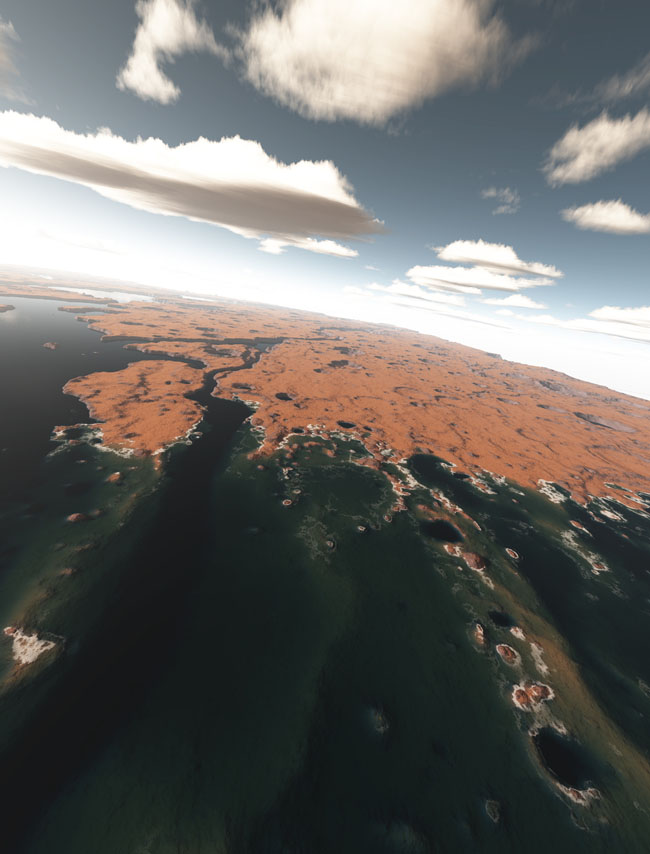Ancient Mars Covered by Vast Ocean

More than 3 billion years ago, the northern plains of Mars were covered by a vast ocean that blanketed more than a third of the red planet's surface, new research suggests.
Previous spacecraft investigations have pointed to possible signs of an ancient ocean on Mars. Still, this idea has been challenged for decades, as past evidence has been uncertain, and the matter remains one of the greatest open questions when it comes to researching the red planet.
Now scientists have analyzed global databases of river valley networks on Mars, as well as deposits left behind by ancient deltas. Their research suggests 29 deltas they investigated -- more than half of all those in the databases -- sat at roughly the same height some 3.5 billion years ago, apparently ringing a vast ancient ocean shoreline in the northern lowlands of Mars. [What the Ocean Looked Like]
"Our findings lend credence to the existing theories regarding extent and formation time of an ancient ocean on Mars," said researcher Gaetano Di Achille, a planetary geologist at the University of Colorado at Boulder. "Moreover our test suggests that early Mars could have likely had a global water cycle similar to the present hydrological configuration of our planet."
The elevation of the newly proposed shoreline also broadly matches up with the outlets of ancient river valley networks, indicating a globally uniform water level on ancient Mars.
"It is a very basic scheme on our planet — rivers form deltas when opening into the seas and oceans and these are ideally formed at the same elevation, the mean global sea level, across the planet," Di Achille said.
All in all, the researchers estimate the ocean would have covered nearly 36 percent of Mars' surface — a body of water encompassing more than 31 million square miles (81 million square kilometers), an area greater than the Atlantic Ocean.
Breaking space news, the latest updates on rocket launches, skywatching events and more!
"It is surprising how our results are compatible with previous independent studies based on totally different approaches," Di Achille said. "Of course, our paper will not say the final word on the debate about the Martian ocean, but we are adding a significant piece to the big puzzle."
One significant open question is where the water went after the disappearance of this ocean. "Hopefully the next missions to Mars, like for example MAVEN, will help to answer this question and provide new insights into the history of the Martian water and the presence of an ancient ocean on Mars," Di Achille said.
Di Achille and his colleague Brian Hynek detailed their findings in the June 13 online issue of the journal Nature Geoscience.
- Images: Mars Waterworld Imagined
- Earth vs. Mars: Polar Opposites
- Video — Hunting Mars Water with a Cannon
Join our Space Forums to keep talking space on the latest missions, night sky and more! And if you have a news tip, correction or comment, let us know at: community@space.com.

Charles Q. Choi is a contributing writer for Space.com and Live Science. He covers all things human origins and astronomy as well as physics, animals and general science topics. Charles has a Master of Arts degree from the University of Missouri-Columbia, School of Journalism and a Bachelor of Arts degree from the University of South Florida. Charles has visited every continent on Earth, drinking rancid yak butter tea in Lhasa, snorkeling with sea lions in the Galapagos and even climbing an iceberg in Antarctica. Visit him at http://www.sciwriter.us
